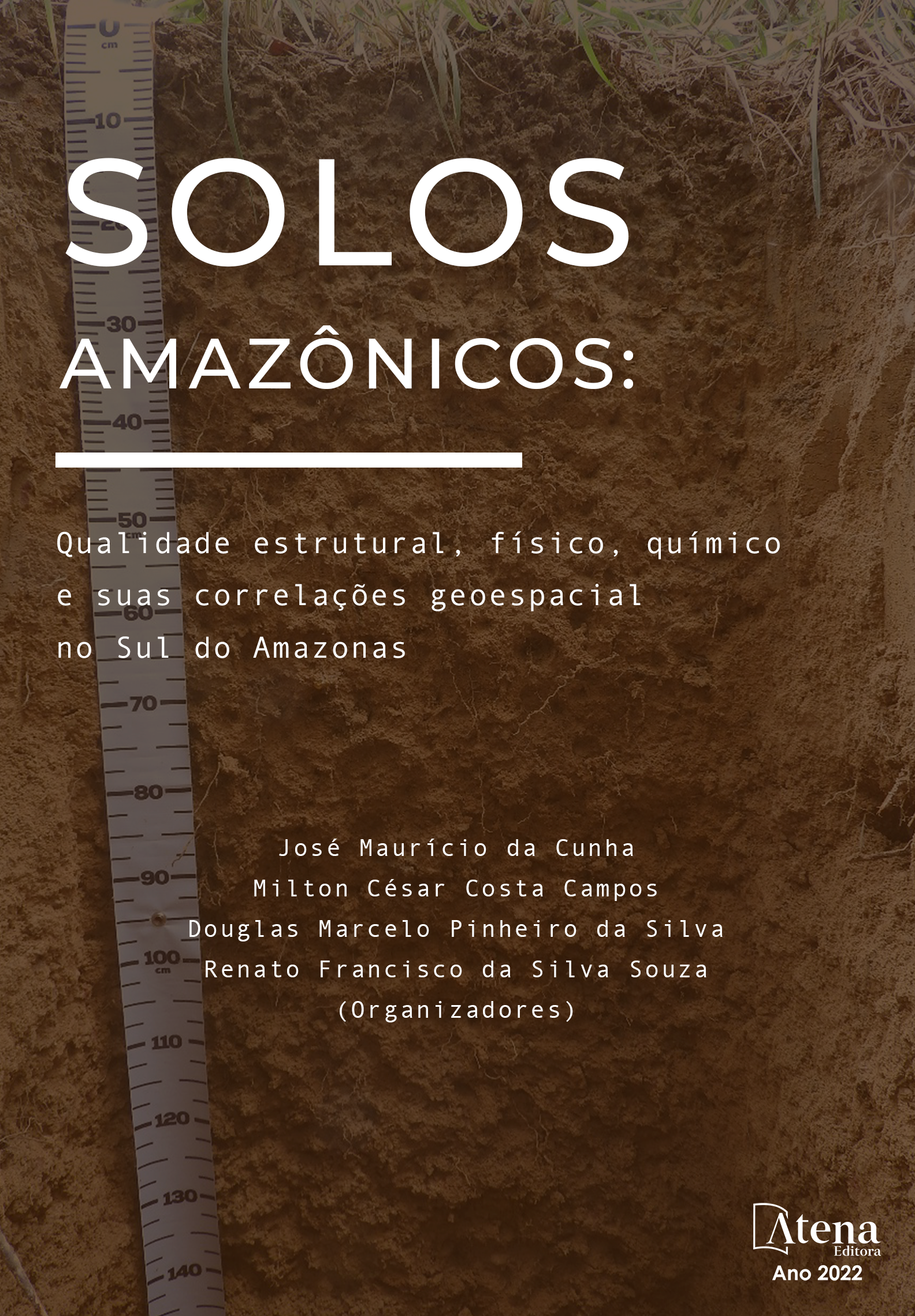
5 - ATRIBUTOS FÍSICOS DO SOLO SOB CONVERSÃO DE FLORESTA AMAZÔNICA PARA DIFERENTES SISTEMAS DE CULTIVO NO SUL DO AMAZONAS, BRASIL.
A conversão de áreas florestadas em sistemas de cultivo modifica os atributos físicos do solo e afetam a sustentabilidade ambiental e econômica da atividade agrícola. O presente trabalho teve como objetivo avaliar alterações nos atributos físicos do solo em áreas sob cultivos de guaraná, cupuaçu e urucum, em comparação com a área de floresta. Foram estabelecidas malhas de acordo com as dimensões do cultivo, nas áreas de floresta e guaraná estabeleceu-se malhas de 90 x 70 m e espaçamento regular entre os pontos amostrais de 10 x 10 m, na área de urucum a malha estabelecida foi de 90 x 56 m e espaçamento de 10 x 8 m, já para área de cupuaçu a malha apresentou dimensões de 54 x 42 m, com espaçamento entre os pontos amostrais de 6 x 6
m. Após delimitadas as malhas foram coletadas amostras nos pontos de cruzamento das malhas, nas profundidades de 0,00-0,05; 0,05-0,10; e 0,10-0,20 m, com 80 pontos amostrais em cada área, totalizando 240 amostras por área. Em cada ponto amostral, foram coletadas amostras com estrutura preservada em forma de torrão nas três profundidades avaliadas para determinação dos atributos físicos e textura do solo, perfazendo um total de 960 amostras nas quatro áreas avaliadas. O processo de conversão de florestas em áreas cultivadas sem manejo adequado causou mudanças negativas nos atributos físicos do solo. As áreas cultivadas com guaraná e urucum, apresentaram estágio mais avançado de degradação das propriedades físicas do solo; os atributos que mais sofreram alterações na conversão de floresta em ambientes cultivados foram: Ds, MaP, MiP, Pt, RSP e IEA; através da análise multivariada foi possível aferir que as maiores alterações dos atributos físicos para as áreas estudadas ocorreram nas profundidades 0,00-0,05 e 0,05-0,10 m.
5 - ATRIBUTOS FÍSICOS DO SOLO SOB CONVERSÃO DE FLORESTA AMAZÔNICA PARA DIFERENTES SISTEMAS DE CULTIVO NO SUL DO AMAZONAS, BRASIL.
-
DOI: 10.22533/at.ed.4732219056
-
Palavras-chave: degradação do solo; análise multivariada; Atributos do solo.
-
Keywords: soil degradation; multivariate analysis; soil attributes
-
Abstract:
The conversion of forested areas into cropping systems modifies the physical attributes of the soil and affects the environmental and economic sustainability of agricultural activity. The present work had as objective to evaluate alterations in the physical attributes of the soil in areas under guaraná, cupuaçu and urucum crops, compared to the forest area. Were established meshes according to the dimensions of cultivation, in the areas of forest and guaraná were established meshes of 90 x 70 m and regular spacing between the sample points of 10 x 10 m, in the area of annatto the established mesh was of 90 x 56 m and spacing of 10 x 8 m, already for area of cupuaçu the mesh had dimensions of 54 x 42 m, with spacing between the sample points of 6 x 6 m. After delimiting the meshes samples were collected at the crossing points of the meshes, at depths of 0,00-0,05; 0,05-0,10; and 0,10-0,20 m, with 80 sampling points in each area, totaling 240 samples per area. At each sampling point, were collected samples with a structure preserved clod-shaped were collected in the depths evaluated, to determine the physical attributes and soil texture, making a total of 960 samples in the four evaluated areas. The process of conversion of forests into cultivated areas without proper management caused negative changes in the physical attributes of the soil. The areas cultivated with guaraná and urucum presented more advanced stage of degradation of soil physical properties; the attributes that suffered the most changes at conversion of forest in cultivated environments were: Ds, MaP, MiP, Pt, RSP and IEA; through the multivariate analysis it was possible to verify that the greatest alterations of the physical attributes for the studied areas occurred in the depths 0.00-0.05 and 0.05-0.10 m.
-
Número de páginas: 33
- José Maurício da Cunha


